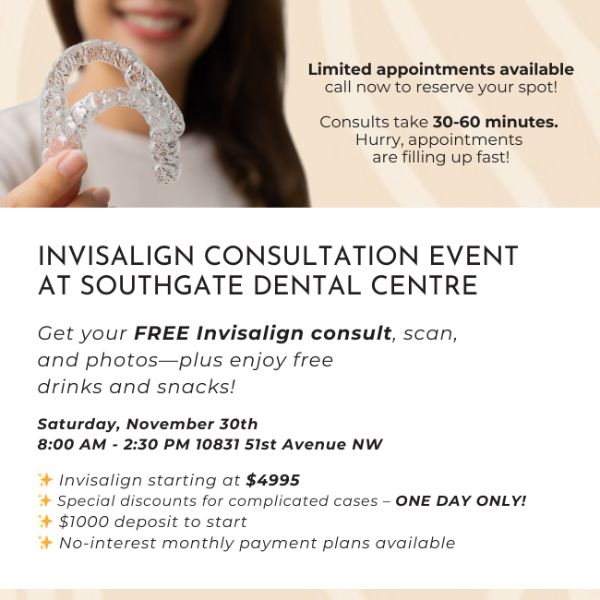We all understand the importance of oral hygiene. Good oral hygiene happens both at home and at the dentist’s office. In order to help keep our teeth and gums happy and healthy, we need to make sure we are brushing at least twice per day and flossing at least once per day.
Why is Flossing Important?
Brushing and flossing form the foundation of a good at home oral hygiene routine. Brushing removes plaque, which can harden into tartar and cause gum disease and tooth decay. Flossing is important because it allows us to clean the hard to reach places where our toothbrushes can’t reach. According to the Canadian Dental Association when we skip flossing we miss as much as one-third of the surface area of each tooth, potentially leaving a lot of plaque behind.
If plaque isn’t removed within 24 to 36 hours of it forming it begins to form into tartar, also called calculus). By flossing at least once per day you ensure that you remove the plaque that has formed on your teeth and prevent tartar from forming.
What Happens if I Don’t Floss?
Skipping out on flossing can have serious consequences for both your oral health and your overall health and wellbeing. Flossing helps ensure that all of the plaque on our teeth is removed before it can harden into tartar. Tartar causes our gums to become inflamed and bleed, a condition called gingivitis.
Gingivitis can be reversed by sticking to a regular flossing and brushing routine, and by getting your teeth professionally cleaned at least once per year. If gingivitis is left unchecked the infection can spread to other parts of your periodontium (the bone and soft tissue that holds our teeth firmly in place). This condition is called periodontitis and can result in tooth loss if it is left untreated.
Good Flossing Technique
Flossing is an important part of the plaque removal process, but only if it is done correctly. Employing the following techniques will help you ensure you are flossing thoroughly.
- Start with a length of floss equal to the length of your arm.
- Wrap the majority of the floss around your index or middle fingers, leaving a two-inch gap between your hands.
- Slide the floss between your teeth and wrap it in a “C” shape around the base of your tooth and gently position it beneath your gumline.
- Wipe your tooth from root to tip two or three times to remove any plaque that has accumulated.
- Move onto the next tooth, and be sure to floss both sides of each tooth. As the floss wears out shift it along your fingers so that a new section of floss is available for use.
- Don’t forget your back molars.
- Brush your teeth when you have finished flossing. Brushing your teeth after you floss, as opposed to before, is more effective at preventing gum disease and tooth decay.
Conclusion
Flossing is an important part of any comprehensive oral hygiene routine, and should not be overlooked. When we neglect to floss plaque is allowed to accumulate between our teeth and under our gumlines and harden into tartar. Tartar is one of the main causes of gum disease and tooth decay. When you floss make sure you are doing so correctly so that you can best ensure you haven’t missed any plaque or food particles.


